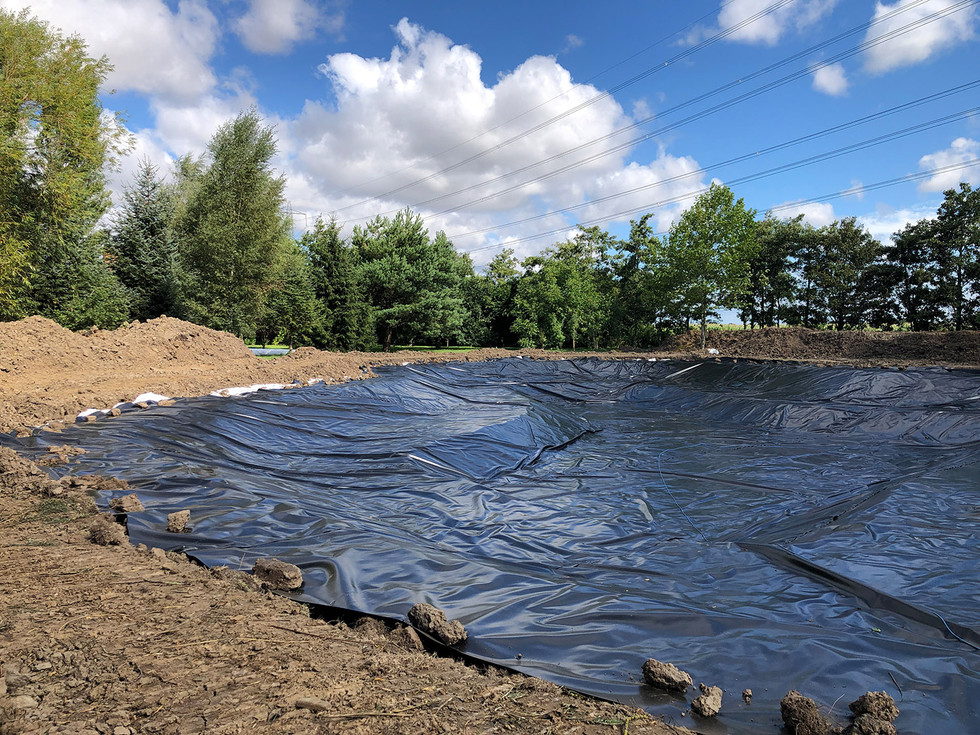SO NOW WE'RE GOING TO BUILD A LAKE?
- Chris Berry
- Aug 20, 2020
- 3 min read
Updated: Jan 2, 2023
The somewhat incredulous utterance from me when Helen first mooted this latest crazy idea, but... well read on. The far south east corner of our land is flanked by the road on two sides of the boundary and is also the piece of land furthest away from the mill where we live. The previous owners had never done much with it and referred to it as the scrub as they had sort of left it to do its own thing. The road causes a bit of noise as whilst not especially busy the sharp bend down there has the braking and acceleration noise for every vehicle using it and hence it was sort of dead land to us initially too.
Over time though Helen realised it had some hidden potential. She is (as you may have guessed if you have read other parts of this blog) a huge animal and plant lover and that extends to fish and aquatic plants and while we had a small pond near the mill she hankered after something on a much grander scale. The problem with digging a large pond, or lake as we decided to pretentiously call it, is that getting rid of the waste soil/clay etc. is massively expensive, but she thought if we were to dig a lake on the land occupied by the scrub and use the waste material to create banks (or berms as they are apparently called) around the perimeter of the land next to the road we would save a lot of money and provide some privacy and sound blocking into the bargain.
To be fair I couldn't fault this logic and so we surveyed the land and worked out the best shape for the lake so as not to remove many of the nicely established trees and then also worked out where the berms would run again taking into account any trees. With that settled upon we set about working out how to actually create the lake in technical terms taking advice from various specialists in this area. Ultimately we decided to go with a reservoir lining that is unrolled in strips and then heat gunned together to form a large single liner for the lake. Using a liner has one slight drawback in that it means care needs to be taken as regards the natural water table level as dig below this and the pressure on the liner from the water table below it can push it upwards and cause issues with the liner. As it happens we had tested the water table level in the wettest part of winter in 2019 (when digging an exploratory hole to ascertain the soil conditions around the foundations of the mill as part of a structural survey) and found it to be 2.5m below ground level. Therefore, it was decided to set the deepest part of the lake at 2.25m to hopefully ensure even the deepest part of the lake would always be above the water table level.
So with all that sorted the time came to set out the outline of the lake on the land and "bring the digger in". Well, it didn’t really as we were in the middle of the barn project, but what else can you do when the sun is shining and your partner wants a lake? Down tools on the barn project and get stuck in to the new project of course as it makes complete sense, well it does in our mad world.
While I can handle a mini-digger the scale of this needed something altogether more full on and so a digger with driver was hired along with a dump truck and driver. The idea was to pile all the waste up next to the lake in order to get it dug and lined and to then move the waste to form the berms as the second part of the exercise.
Lake outline in place and the digger moves in.
The digging took about 10 days in total and then the lake was ready for its liner. The ultra durable reservoir liner sits on a flexible membrane that helps smooth out any sharp edges and is rolled out in strips and cut to the outline of the lake.
Liner being pulled into position.
Once all the lining strips were in place each strip is heat sealed to the next to form a single heavy weight lining This part of the process only took just over a day to achieve albeit with the help of significant man power and the digger acting as a spool holder.
Liner being heat sealed.













































Comments